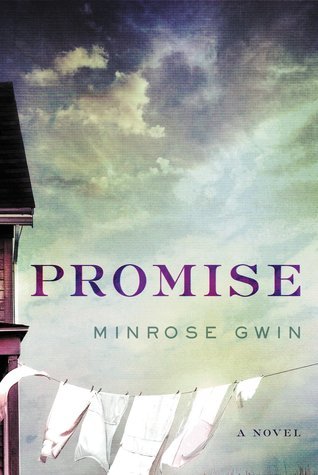
Promise
A Novel
کتاب های مرتبط
- اطلاعات
- نقد و بررسی
- دیدگاه کاربران
نقد و بررسی

December 15, 2017
After a natural disaster, two families must confront the awful event that links them.When a tornado struck the town of Tupelo, Mississippi, in April 1936, more than 200 people died. But the black residents who lost their lives during the disaster were not included in the official count of the dead. In her second novel, Gwin (The Queen of Palmyra, 2010) attempts to provide a corrective by focusing on a black family, the Grand'hommes, and a white family, the McNabbs. The story alternates between the perspectives of Dovey, the Grand'homme matriarch and a washerwoman, and Jo, the McNabbs' teenage daughter, who encounter each other in a somewhat contrived moment after the tornado has passed through town. As each woman navigates the devastation of the city while looking for her family, Gwin explores how Tupelo's black and white residents were treated differently in the aftermath while capably deploying flashback to reveal the history of each family and the violent moment that unites them. Though the story is generally well-paced, with foreshadowing placed nicely throughout, readers may become impatient once they've cracked the mystery that propels the plot. At times, Gwin's prose is profound and Faulkner-ian in tone: "Time isn't a river, Jo thought; time is ground and dirt and the roots of ancient trees and the bones of past things. Time is underfoot"; at others, it relies on cliche or the obvious ("melted like snow in the sun") or misfires in its details, such as a remark about Dovey having walked through the McNabbs' front door regularly or Jo's immense regret for using a racial slur, while not providing sufficient evidence for readers to expect such departures from 1930s Southern social mores. Still, those who enjoy Southern fiction that explores both sides of the color line will want to give Gwin's latest a gander, and the novel's especially timely focus on what happens to communities in the aftermath of a natural disaster will draw many readers.Despite some narrative missteps, Gwin's latest effort will inspire further exploration of an underexamined American tragedy.
COPYRIGHT(2017) Kirkus Reviews, ALL RIGHTS RESERVED.

December 1, 2017
A massive tornado destroyed the Mississippi town of Tupelo on Palm Sunday, 1936. The twister claimed the lives of more than 200 of the town's white residents. The black members of the community who were killed and injured went uncounted. In this harrowing novel, Gwin describes the desperate fight for survival of two people who, on the surface, are about as different from each other as they could be. Dovey, a black washwoman whose granddaughter lost a seemingly bright future when she was bothered and impregnated by a white man, is blown into a pond by the storm's winds. Meanwhile, Jo, the white teenage daughter of a judge and the sister of the young man who attacked Dovey's granddaughter, is left to care for her mother and infant brother after the storm. But Dovey and Jo have more in common than it seems, as their stories unfold in the days after the storm. A gripping tale of racism, power, and the bonds that make a family, Promise explores how one can rebuild after tragedy strikes.(Reprinted with permission of Booklist, copyright 2017, American Library Association.)

February 1, 2018
An opening author's note explains how reports of the devastating 1936 Tupelo, MS, tornado that killed 200 people ignored its impact on the African American community, so this work of historical fiction is intended as a means of deciphering that "fractured landscape"--making it a novel that would appeal to readers of Sue Monk Kidd's The Invention of Wings. Black and white characters are equally well drawn in this atmospheric whirlwind of a book, set over the brief period from the moment the unannounced late-evening storm strikes to its horrific aftermath. The story jumps back and forth in time, as confusedly as the protagonists' thoughts, following the parallel paths of survivors struggling to find family members, but persistent readers will be well rewarded. VERDICT Gwin's sophomore effort (after The Queen of Palmyra) is a memorable, dreamlike, if disjointed narrative that vividly conveys what it was like to survive the fourth most deadly tornado in U.S. history; it also brings to light the vast disparity in the care and treatment of white vs. black residents. [See Prepub Alert, 8/28/17.]--Laurie Cavanaugh, Thayer P.L., Braintree, MA
Copyright 2018 Library Journal, LLC Used with permission.

September 15, 2017
On April 5, 1936, as part of a four-day series of twisters throughout the South, tornadoes hit Tupelo, MS, and Gainesville, GA, killing more than 200 people; the Tupelo outbreak reached the top of the scale measuring tornado strength. Tupelo native Gwin, whose Palmyra was a Discover Great New Writers pick, lets us relive the events by telling the story of African American teenager Dovey, who stops by the powerful white McNabbs as she rushes home and discovers a baby boy she's convinced is her brother. With a 100,000-copy first printing.
Copyright 2017 Library Journal, LLC Used with permission.

























دیدگاه کاربران